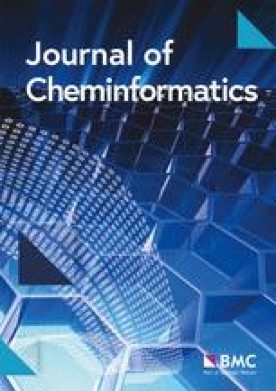使用扩散模型和强化学习生成具有所需属性的多目标化合物的3D生成框架
IF 5.7
2区 化学
Q1 CHEMISTRY, MULTIDISCIPLINARY
引用次数: 0
摘要
深度生成模型为分子的从头设计提供了强有力的解决方案。然而,现有的大多数方法只能产生针对单一目标的分子。生成具有针对多种特定目标和所需特性的生物活性的分子仍然是一项极其困难的挑战。在这项研究中,我们提出了一种新的基于强化学习和扩散模型的3D分子生成框架,为给定的多个目标生成具有预定义属性的分子。提出的框架MDRL使用扩散模型来理解分子的三维化学结构,并使用Kolmogorov-Arnold网络而不是多层感知器来提高模型性能。通过强化学习,该框架能够生成同时针对两个靶标的分子,并进一步优化多个分子性质。实验结果表明,我们的模型具有与各种最先进的分子生成模型相当的性能,并且MDRL可以有效地导航化学空间来设计多药理化合物并控制多种分子性质。在多个案例研究中,我们通过分子对接验证了生成的分子可以同时靶向两个靶标,并评估了模型控制多个分子性质的能力。本研究的结果突出了我们的模型在生成具有所需性质的多药理学化合物方面的优势和实用性。本研究引入了MDRL,这是一个集成了扩散模型和强化学习的3D分子生成框架,用于联合优化多靶点结合和分子性质。MDRL在控制药物相关性质和增强多靶点亲和力方面比现有方法有了改进。实验结果表明,MDRL可以有效地生成具有强大多药理特征的类药物化合物,为多靶点药物设计提供了一种新的策略。本文章由计算机程序翻译,如有差异,请以英文原文为准。
A 3D generation framework using diffusion model and reinforcement learning to generate multi-target compounds with desired properties
Deep generative models provide a powerful solution for the de novo design of molecules. However, the majority of existing methods only generate molecules for a single target. Generating molecules with biological activities against multiple specific targets and desired properties remains an extremely difficult challenge. In this study, we propose a novel 3D molecule generation framework based on reinforcement learning and diffusion model to generate molecules with predefined properties for given multiple targets. The proposed framework, MDRL, uses a diffusion model to understand the 3D chemical structure of molecules and employs Kolmogorov-Arnold Networks instead of Multilayer Perceptron to enhance model performance. Through reinforcement learning, the framework is able to generate molecules that simultaneously target two targets and further optimizes multiple molecular properties. Experimental results show that our model exhibits comparable performance to various state-of-the-art molecular generation models, and MDRL can effectively navigate chemical space to design polypharmacological compounds and control multiple molecular properties. In multiple case studies, we verify that the generated molecules can simultaneously target two targets through molecular docking and assess the model’s ability to control multiple molecular properties. The results in this study highlight the advantages and practicalities of our model in generating polypharmacological compounds with desired properties. This study introduces MDRL, a 3D molecular generation framework integrating diffusion models and reinforcement learning for joint optimization of multi-target binding and molecular properties. MDRL shows improvements over existing methods in controlling drug-relevant properties and enhancing multi-target affinity. Experimental results demonstrate that MDRL efficiently generates drug-like compounds with robust polypharmacological profiles, offering a novel strategy for multi-target drug design.
求助全文
通过发布文献求助,成功后即可免费获取论文全文。
去求助
来源期刊

Journal of Cheminformatics
CHEMISTRY, MULTIDISCIPLINARY-COMPUTER SCIENCE, INFORMATION SYSTEMS
CiteScore
14.10
自引率
7.00%
发文量
82
审稿时长
3 months
期刊介绍:
Journal of Cheminformatics is an open access journal publishing original peer-reviewed research in all aspects of cheminformatics and molecular modelling.
Coverage includes, but is not limited to:
chemical information systems, software and databases, and molecular modelling,
chemical structure representations and their use in structure, substructure, and similarity searching of chemical substance and chemical reaction databases,
computer and molecular graphics, computer-aided molecular design, expert systems, QSAR, and data mining techniques.
 求助内容:
求助内容: 应助结果提醒方式:
应助结果提醒方式:


